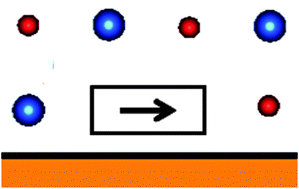A mechanism of Cu work function reduction in CsBr/Cu photocathodes
Abstract
Thin films of CsBr deposited on Cu(100) have been proposed as next-generation photocathode materials for applications in particle accelerators and free-electron lasers. However, the mechanisms underlying an improved photocathode performance as well as their long-term stability remain poorly understood. We present Density Functional Theory (DFT) calculations of the work function reduction following the application of CsBr thin film coatings to Cu photocathodes. The effects of both flat and rough interface and van der Waals forces are examined. Calculations suggest that CsBr films can reduce the Cu(100) work function by about 1.5 eV, which would explain the observed increase in quantum efficiency (QE) of coated vs. uncoated photocathodes. A model explaining the experimentally observed laser activation of photocathodes is provided whereby the photo-induced creation of Br vacancies and Cs–Br di-vacancies and their subsequent diffusion to the Cu/CsBr interface lead to a further increase in QE after a period of laser irradiation.


 Please wait while we load your content...
Please wait while we load your content...